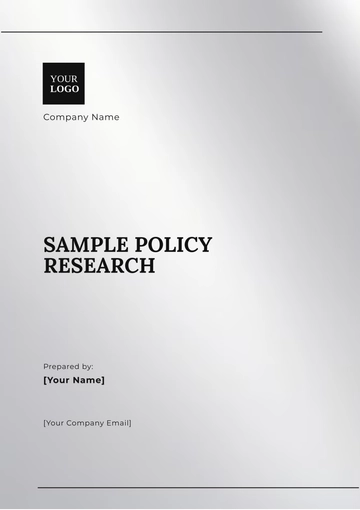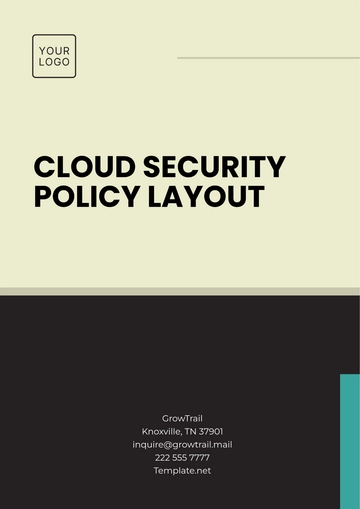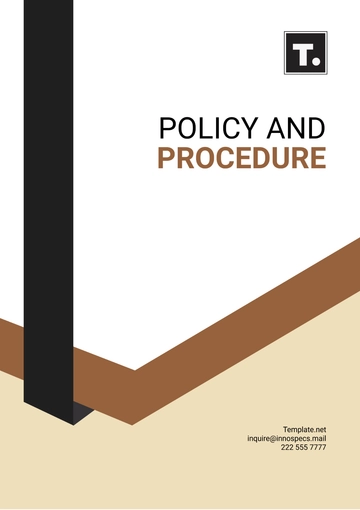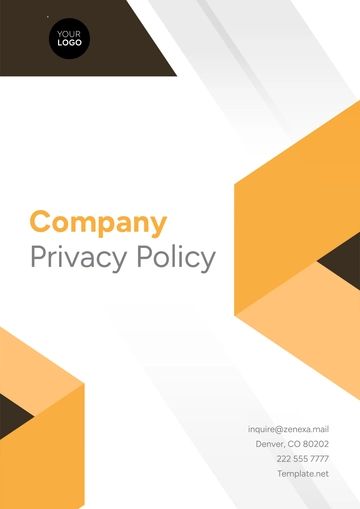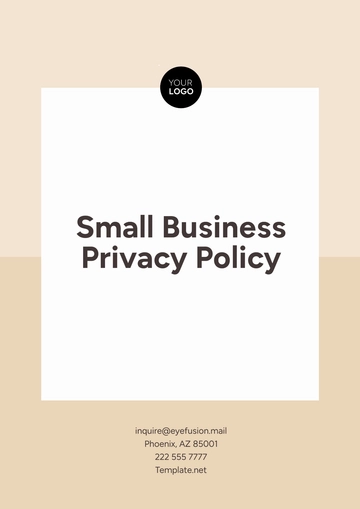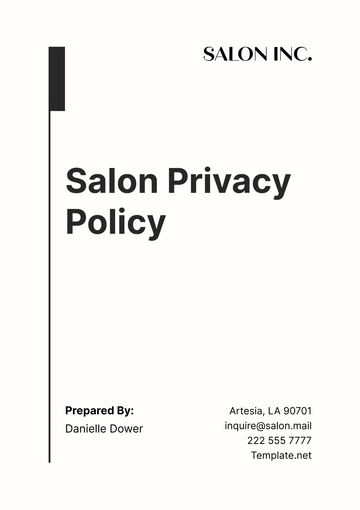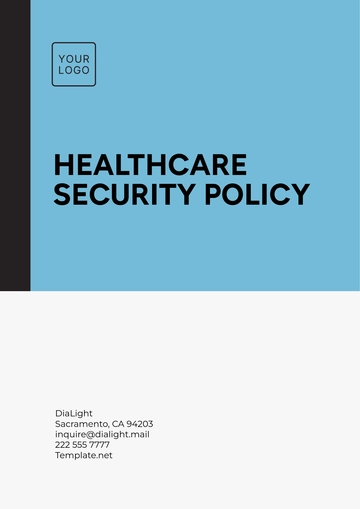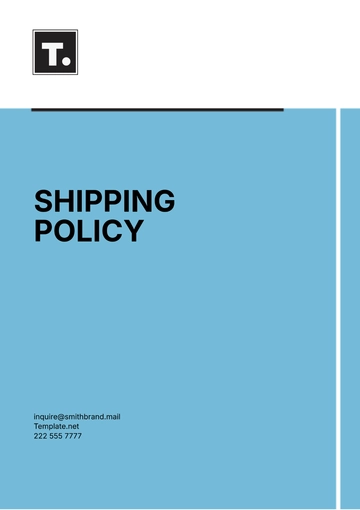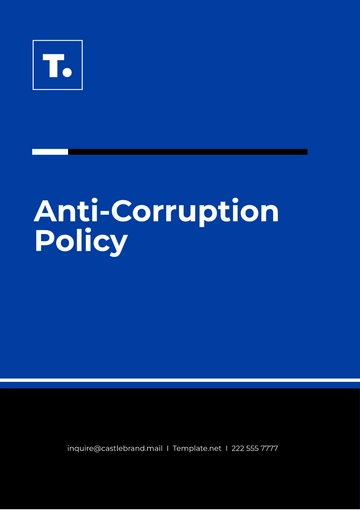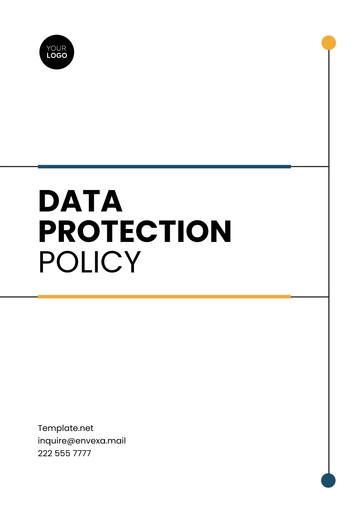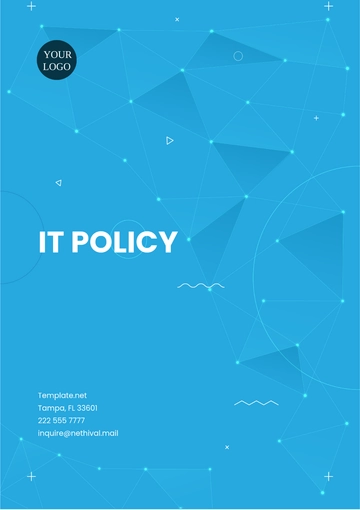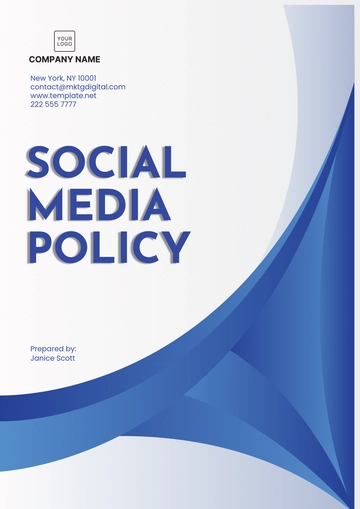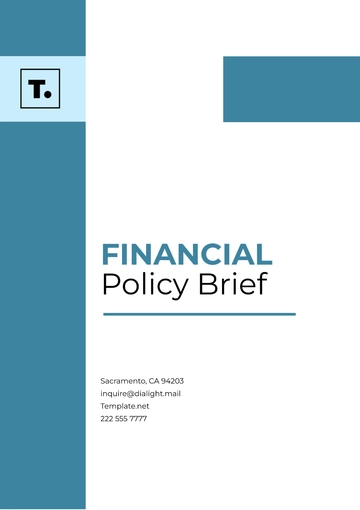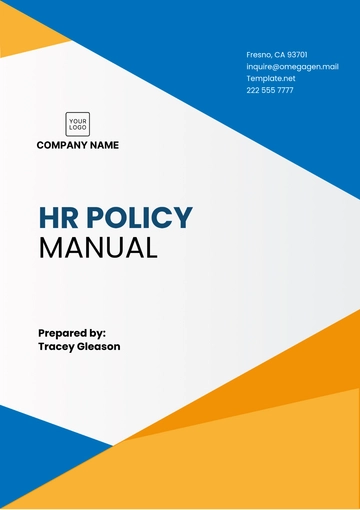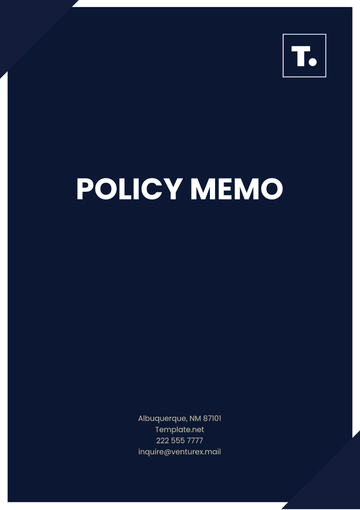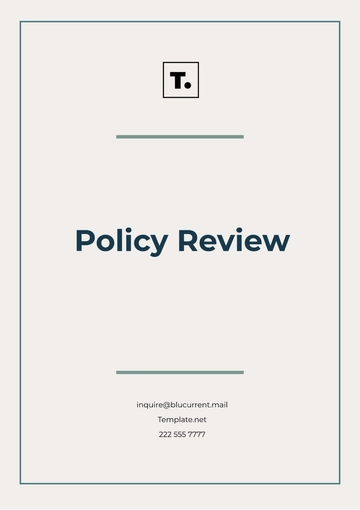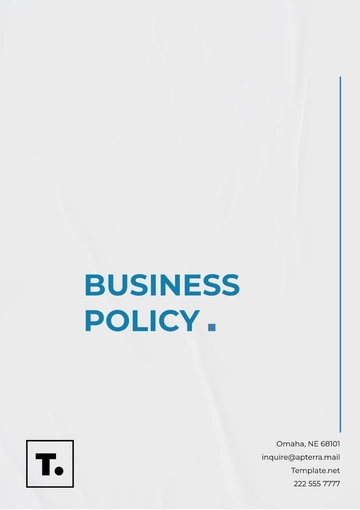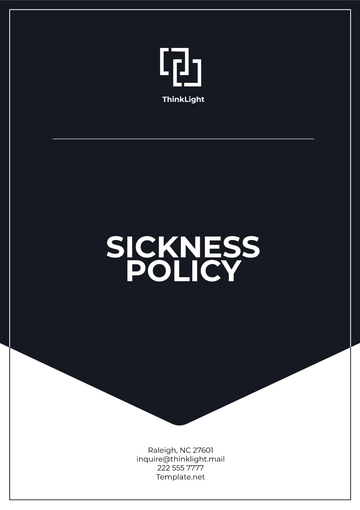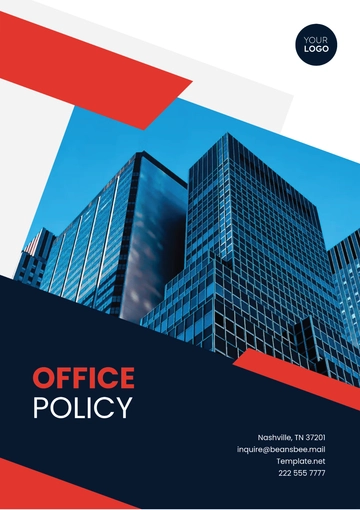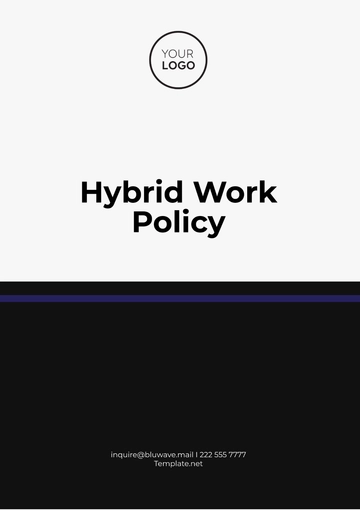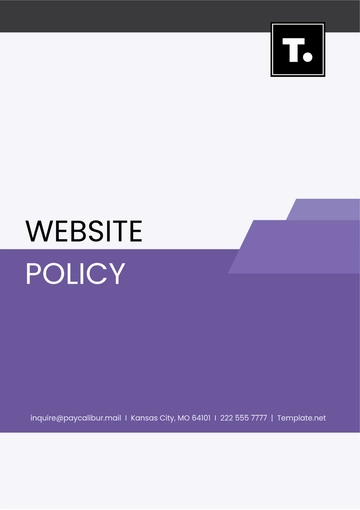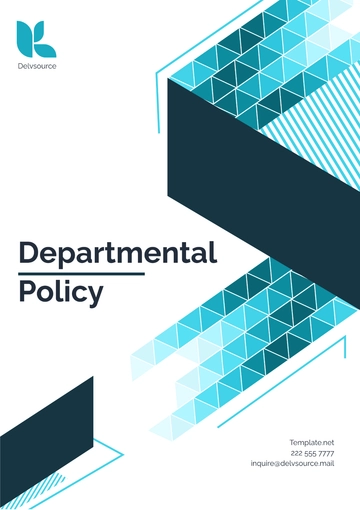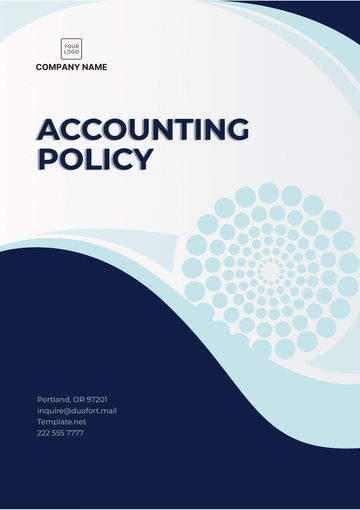Free Pharmaceutical Policy
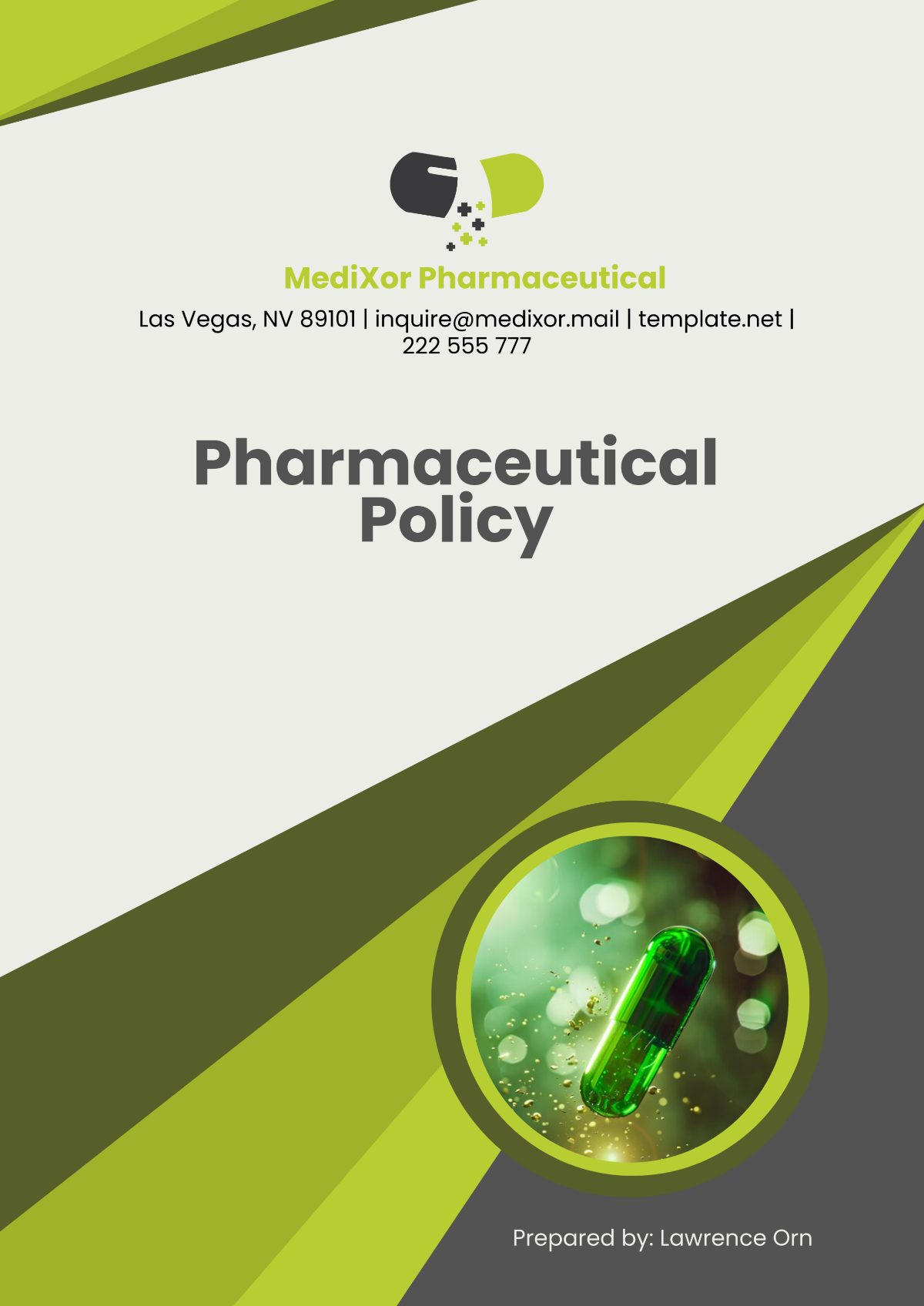
I. Introduction
This policy outlines the guiding principles, responsibilities, and expectations for employees, stakeholders, and partners. By adhering to these standards, [Your Company Name] ensures compliance with legal regulations, industry best practices, and the company’s commitment to social responsibility.
Purpose & Scope
The policy establishes a foundation for ethical conduct and regulatory compliance across all operations. It aligns with the company's values and long-term objectives. The guidelines apply to all employees, contractors, and partners associated with the company globally. Specific procedures and practices are detailed for clarity.
II. Code of Conduct
The Code of Conduct defines the behavioral expectations for all employees and stakeholders of [Your Company Name]. This section ensures that ethical practices are upheld in every interaction and decision.
Professionalism: Employees are expected to act with professionalism, respecting colleagues, customers, and stakeholders. This fosters a positive and collaborative work environment.
Conflict of Interest: Employees must avoid situations where personal interests conflict with business objectives. Disclosures are required to prevent unethical outcomes.
Confidentiality: Protecting sensitive company information is mandatory. Unauthorized disclosure of data will result in severe consequences, including termination.
Non-Discrimination: The company maintains a zero-tolerance policy toward discrimination or harassment based on race, gender, religion, or other protected categories.
Reporting Violations: Employees are encouraged to report any suspected violations of the Code of Conduct. Anonymous reporting mechanisms are available to protect whistleblowers.
III. Compliance with Regulatory Standards
Adherence to regulatory standards is critical for the pharmaceutical industry to maintain safety, efficacy, and legal compliance. [Your Company Name] ensures compliance with all relevant laws and industry guidelines.
Pharmaceutical Safety: All products must meet stringent safety and efficacy standards. Regulatory compliance is non-negotiable to protect patient health.
Clinical Trial Integrity: Trials are conducted transparently and ethically, ensuring participant safety and reliable results. Regulatory submissions include accurate and complete data.
Manufacturing Standards: Compliance with Good Manufacturing Practices (GMP) ensures product consistency and quality. Routine audits are conducted to uphold these standards.
Data Privacy Laws: All patient and customer data is protected under GDPR, HIPAA, and other relevant privacy laws. Breaches are addressed with urgency and transparency.
Regular Training: Employees undergo regular training on compliance requirements. This ensures that all staff are equipped to meet evolving regulatory demands.
IV. Environmental Sustainability
Environmental stewardship is an integral part of [Your Company Name]’s operations. This section outlines commitments and initiatives to minimize the company’s environmental impact.
Sustainable Sourcing: Raw materials are sourced responsibly to reduce environmental damage. Preference is given to suppliers with certified eco-friendly practices.
Waste Management: Pharmaceutical waste is disposed of according to strict environmental regulations. Recycling and safe disposal practices are prioritized.
Energy Efficiency: Facilities are designed to minimize energy consumption and utilize renewable energy sources where possible. Carbon footprint reduction is a key objective.
Packaging Innovation: Eco-friendly packaging solutions are implemented to reduce plastic and non-biodegradable waste. Customer feedback is used to improve packaging designs.
Community Initiatives: The company invests in environmental conservation projects and partners with NGOs to promote sustainability. These efforts align with global environmental goals.
V. Workplace Safety
[Your Company Name] prioritizes the health and safety of its employees. This section outlines safety standards and practices to create a secure and hazard-free workplace.
Risk Assessments: Regular risk assessments are conducted to identify potential workplace hazards. Mitigation strategies are implemented promptly.
Employee Training: Comprehensive safety training programs equip employees to handle emergencies and follow safety protocols. Training is refreshed annually.
Emergency Preparedness: Emergency response plans are in place, covering fire, chemical spills, and medical incidents. Employees participate in regular drills.
Safety Equipment: Proper personal protective equipment (PPE) is provided to employees, with strict adherence to usage guidelines. Equipment is inspected regularly.
Incident Reporting: All safety incidents must be reported and investigated. Lessons learned from incidents are used to improve safety measures.
VI. Financial Integrity
[Your Company Name] ensures all financial transactions and reporting meet the highest standards of accuracy and transparency.
Category | Policy Requirement | Oversight Authority |
|---|---|---|
Revenue Reporting | All revenue must be accurately recorded. | Financial Compliance Team |
Expense Management | Expenses must be justified and documented. | Audit Committee |
Fraud Prevention | Zero tolerance for financial fraud. | Internal Controls Team |
Budget Allocation | Budgets must align with strategic goals. | Executive Board |
External Audits | Annual audits by certified firms. | External Auditors |
Transparency: Financial reporting is conducted with full transparency to stakeholders. Accurate records build trust and ensure regulatory compliance.
Fraud Prevention: A zero-tolerance policy for fraud protects company assets. Rigorous internal controls are in place.
Ethical Spending: All expenses are aligned with corporate objectives and ethical standards. Unjustified expenditures are prohibited.
Audit Standards: Independent external audits are conducted annually to verify financial integrity. Findings are shared with stakeholders.
Compliance Oversight: A dedicated Financial Compliance Team ensures adherence to financial policies. Training is provided to all employees involved in financial processes.
VII. Data Management and Security
Data security is essential for maintaining the trust of patients, customers, and stakeholders. This section outlines the company’s commitment to safeguarding all forms of data.
Data Type | Security Measure | Frequency |
|---|---|---|
Patient Records | Encrypted storage and restricted access. | Quarterly |
Financial Data | Multi-factor authentication for access. | Bi-Annually |
Intellectual Property | Secure servers and legal protections. | Monthly |
Employee Information | Regular privacy compliance audits. | Annually |
Operational Data | Real-time monitoring of systems. | Continuous |
Confidentiality Commitment: All sensitive data is stored securely, with strict access controls. Employee training ensures compliance with data protection policies.
Encryption Standards: Advanced encryption methods safeguard all digital records. Breach attempts are monitored and mitigated in real-time.
Data Sharing Limits: Data is shared externally only when legally required or contractually obligated. Privacy agreements govern all data-sharing practices.
Incident Response Plans: Plans are in place to address data breaches swiftly. These include notifying affected parties and rectifying vulnerabilities.
Audit and Review: Regular audits ensure ongoing compliance with data protection laws such as GDPR and HIPAA. Continuous improvement processes are implemented.
VIII. Next Steps and Policy Review
To ensure this policy remains effective and relevant, periodic reviews and updates will be conducted. Feedback from employees and stakeholders will inform improvements.
Policy Review Schedule: Policies are reviewed annually to address changes in laws, regulations, and company operations. Updates are communicated to all employees.
Employee Feedback Mechanisms: Employees are encouraged to provide suggestions for improving policies. A feedback portal is available for this purpose.
Training Programs: Ongoing training sessions ensure employees understand and adhere to the policy. Training is mandatory for all new hires.
Monitoring Compliance: Compliance is monitored through regular audits and evaluations. Non-compliance is addressed through corrective actions.
Future Enhancements: Plans include the integration of advanced technologies and data analytics to improve compliance and operational efficiency.
Through rigorous adherence and continuous improvement, [Your Company Name] ensures that this policy serves as a cornerstone for ethical and compliant operations.
- 100% Customizable, free editor
- Access 1 Million+ Templates, photo’s & graphics
- Download or share as a template
- Click and replace photos, graphics, text, backgrounds
- Resize, crop, AI write & more
- Access advanced editor
The Pharmaceutical Policy Template from Template.net offers a structured framework for establishing comprehensive policies in pharmaceutical operations. This editable and customizable template includes sections to outline key regulations, safety protocols, and operational standards. With the Ai Editor Tool, users can easily adapt it to align with specific organizational and compliance requirements.
You may also like
- HR Policy
- Restaurant Policy
- Company Policy
- Accounting Policies and Procedures
- Website Policy
- Privacy Policy
- Safety Policy
- School Policy
- IT and Software Policy
- Law Firm Policy
- Construction Policy
- Interior Design Policy
- Travel Agency Policy
- Education Academic Policy
- Security Policy
- Real Estate Policy
- Expense Policy
- Software Policy
